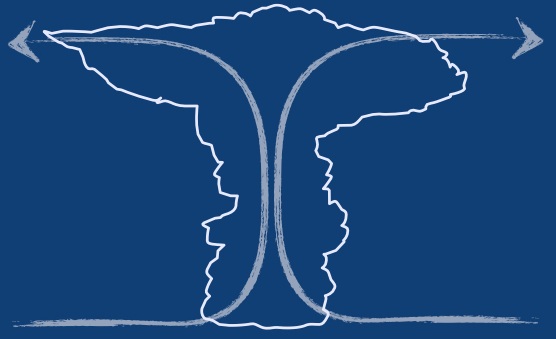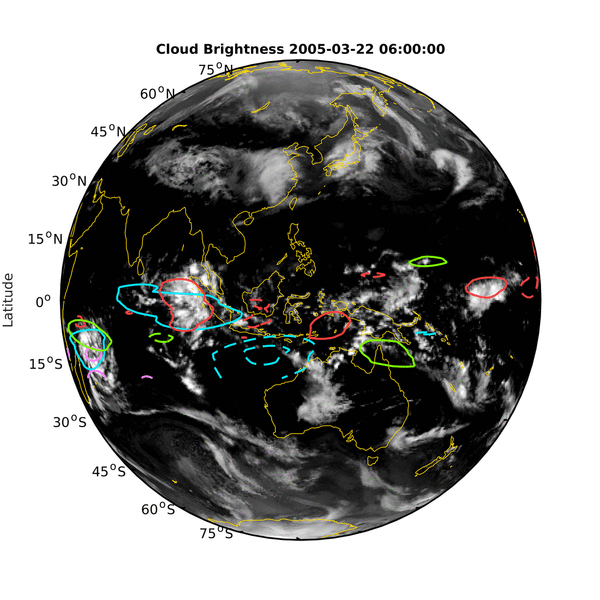Tropical Meteorology
Animation of CLAUS cloud brightness with the propagation of equatorial waves included as contoured. Red contours are Kelvin waves, the blue is MJO, and green are equatorial Rossby waves. The pink contour corresponds to slow Kelvin waves in the MJO envelope. Solid contours indicate convective enhancement while dashed represents convectively suppressed conditions.
Why should we study the tropics? The tropics (roughly from 30°S-30°N) cover half of the world’s surface area. The tropics receive more energy from the sun than what they lose through infrared radiation, and that excess is exported to higher latitudes. Earth’s poles would be much colder if it weren’t for this energy transport.
But that's not the only interesting thing about the tropics! If you inspect the animation again, you will see that tropical clouds are organized differently from their midlatitude counterparts. The contours in the animantion depict different tropical weather systems, as described in the caption. Notice how well they correspond with the clouds. This is just a sample of the great deal of diversity in tropical weather systems. In spite of this diversity, we know less about these systems than what we know about weather at high latitituses. Why do they exist? What causes them to grow and decay? What role do they play in our climate system? My research seeks to answer these questions by developing novel mathematical and statistical techniques, analyzing model simulations, and developing of theory that can capture the salient features of the tropical atmosphere.
Areas of research in tropical meteorology:
Tropical Atmospheric Dynamics
Tropical Thermodynamics
Climate Change
Tropical waves
Tropical cyclones
The Madden-Julian Oscillation (MJO)
El Niño-Southern Oscillation (ENSO)


